Greenland, which US President Donald Trump wants to annex on grounds of US national and international security, is a self-governing Danish territory in the arctic covered in ice, with untapped mineral resources and geostrategic importance.
“We have to have it,” Trump said on Wednesday, ahead of Vice President JD Vance’s visit yesterday to the US Pituffik Space Base on Greenland’s northwestern coast.
Greenland is an autonomous territory, but remains dependent on Copenhagen for law enforcement, monetary policy, foreign affairs, defense and security policy.
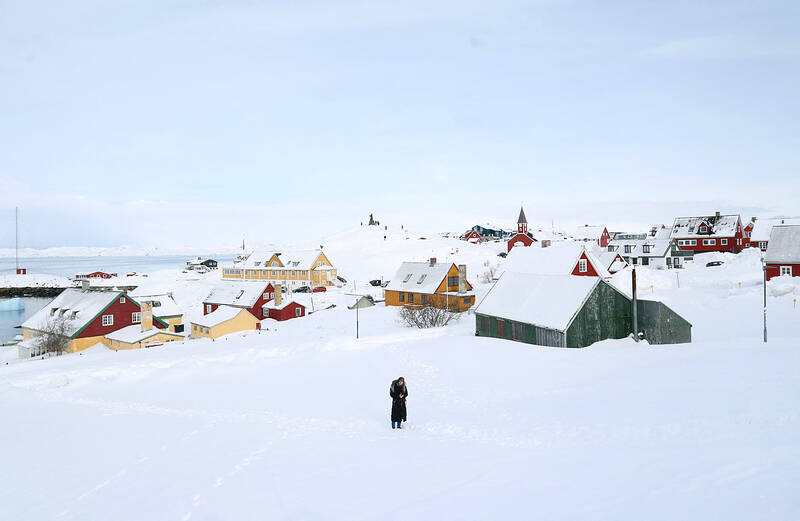
Photo: Reuters
However, with its capital closer to New York than Copenhagen, Greenland is in the US’ “zone of interest,” said Astrid Andersen, senior researcher at the Danish Institute of International Studies.
“During the war, while Denmark was occupied by Germany, the US took over Greenland. In a sense they have never left,” she said.
The US has its active military base there, used during the Cold War as a warning post for possible attacks from the Soviet Union and still an essential part of the US’ missile defense infrastructure.
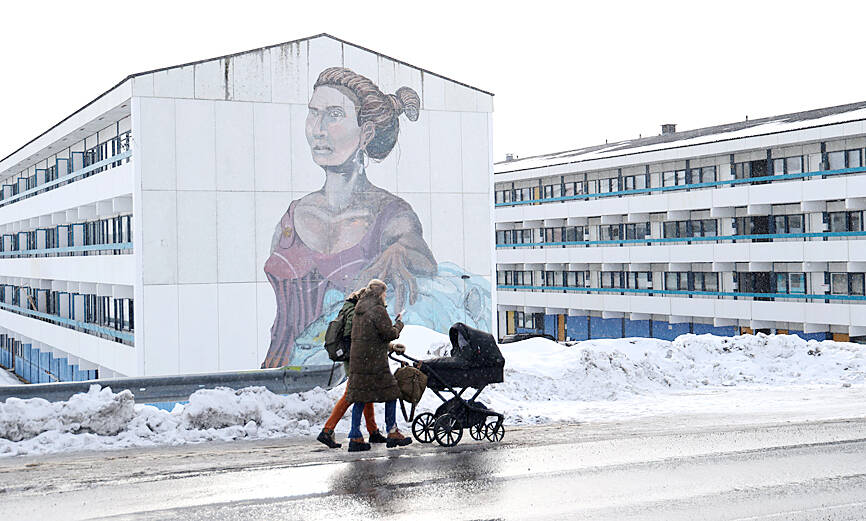
Photo: Reuters
Greenland’s location puts it on the shortest route for missiles between Russia and the US.
Washington has “legitimate complaints about the lack of surveillance of the airspace and submarine areas east of Greenland,” said Ulrik Pram Gad, also a senior researcher at the Danish Institute of International Studies.
Its strategic position is gaining in importance as melting ice opens new shipping lanes, but Trump is using “exaggerated terms,” Pram Gad said
Trump in 2019, during his first term in office, floated the idea of a US purchase of Greenland, but that was rebuffed.
Since 2009, Greenlanders have held the authority of deciding how their natural resources are used.
Access to Greenland’s mineral resources is considered crucial by the US, which signed a memorandum on cooperation in the sector in 2019. The EU followed suit four years later with its own agreement.
Greenland’s soil is well-explored, which has enabled a detailed map of resources to be drawn up. The EU has identified 25 of the 34 minerals on its official list of critical raw materials in Greenland, including rare earths.
“As the demand for minerals is rising, there is a need to go and look for untapped resources,” said Ditte Brasso Sorensen, a senior analyst at Think Tank Europa.
“Actors are more and more aware they need to diversify their sources, especially when it comes to the dependence to China on rare earth elements,” Sorensen said.
Adding to this is the fear that China would get its hands on the mineral resources, she said.
Yet the mining sector in Greenland is largely non-existent. There are only two mines on the island — one for rubies, which is looking for new investors, and the other for anorthosite, a rock containing titanium.
Economically, the territory depends on annual subsidies from Copenhagen — which account for one-fifth of its GDP — and on fishing.
Hopes are in part pinned on the opening of an international airport in Nuuk in November to help develop tourism in the arctic region.
Infrastructure is also a key issue for the development of the mining industry.
“When it comes to extractive industries, Trump is putting Greenland on the mining map in discourse, but it’s hard to say how it could evolve as there is a lack of investors,” said Lill Rastad Bjorst, an associate professor at Aalborg University specializing in Greenland.
Sorensen said there are inherent difficulties of such endeavors in Greenland, with its “very harsh weather conditions, a protected environment and lots of costs with the need to develop the physical and digital infrastructure.”
Public opposition to uranium mining in southern Greenland prompted legislation banning the extraction of radioactive products. Another potential resource to be exploited is oil, but it is at a standstill.
“The government of Greenland has paused their commitment to oil exploration in Greenland and sees a great potential in hydropower,” Rastad Bjorst said.

Incumbent Ecuadoran President Daniel Noboa on Sunday claimed a runaway victory in the nation’s presidential election, after voters endorsed the young leader’s “iron fist” approach to rampant cartel violence. With more than 90 percent of the votes counted, the National Election Council said Noboa had an unassailable 12-point lead over his leftist rival Luisa Gonzalez. Official results showed Noboa with 56 percent of the vote, against Gonzalez’s 44 percent — a far bigger winning margin than expected after a virtual tie in the first round. Speaking to jubilant supporters in his hometown of Olon, the 37-year-old president claimed a “historic victory.” “A huge hug
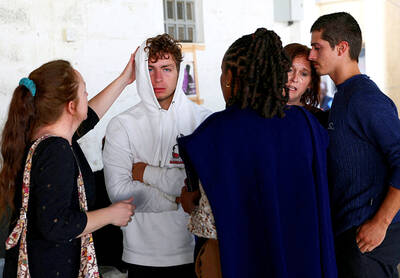
Two Belgian teenagers on Tuesday were charged with wildlife piracy after they were found with thousands of ants packed in test tubes in what Kenyan authorities said was part of a trend in trafficking smaller and lesser-known species. Lornoy David and Seppe Lodewijckx, two 19-year-olds who were arrested on April 5 with 5,000 ants at a guest house, appeared distraught during their appearance before a magistrate in Nairobi and were comforted in the courtroom by relatives. They told the magistrate that they were collecting the ants for fun and did not know that it was illegal. In a separate criminal case, Kenyan Dennis
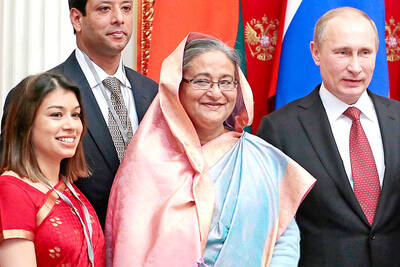
A judge in Bangladesh issued an arrest warrant for the British member of parliament and former British economic secretary to the treasury Tulip Siddiq, who is a niece of former Bangladeshi prime minister Sheikh Hasina, who was ousted in August last year in a mass uprising that ended her 15-year rule. The Bangladeshi Anti-Corruption Commission has been investigating allegations against Siddiq that she and her family members, including Hasina, illegally received land in a state-owned township project near Dhaka, the capital. Senior Special Judge of Dhaka Metropolitan Zakir Hossain passed the order on Sunday, after considering charges in three separate cases filed
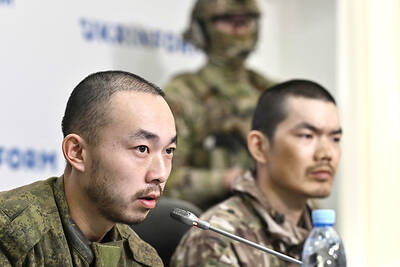
APPORTIONING BLAME: The US president said that there were ‘millions of people dead because of three people’ — Vladimir Putin, Joe Biden and Volodymyr Zelenskiy US President Donald Trump on Monday resumed his attempts to blame Ukrainian President Volodymyr Zelenskiy for Russia’s invasion, falsely accusing him of responsibility for “millions” of deaths. Trump — who had a blazing public row in the Oval Office with Zelenskiy six weeks ago — said the Ukranian shared the blame with Russian President Vladimir Putin, who ordered the February 2022 invasion, and then-US president Joe Biden. Trump told reporters that there were “millions of people dead because of three people.” “Let’s say Putin No. 1, but let’s say Biden, who had no idea what the hell he was doing, No. 2, and